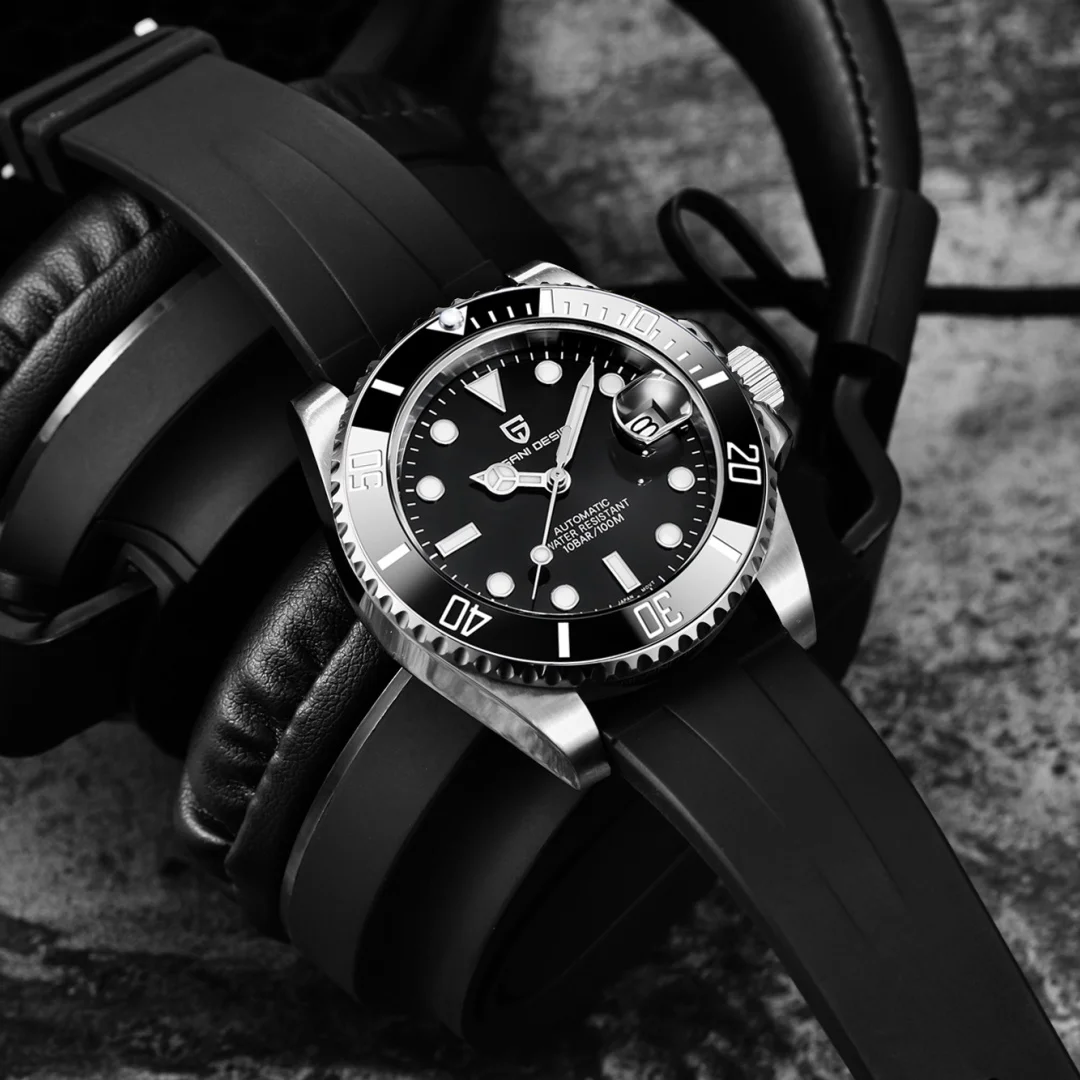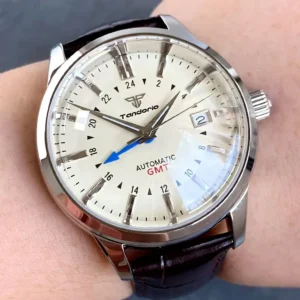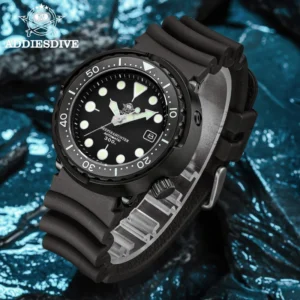The Genesis of Water Resistance: Early Horology Meets Maritime Challenges
Water has always been the enemy of precision timepieces. Long before divers strapped watches to their wrists, horologists battled against moisture—the silent destroyer of gears, springs, and delicate mechanisms. The journey toward truly water-resistant timepieces began centuries ago with simple yet ingenious solutions.
Early watchmakers developed rudimentary protections against the elements:
- Tight-fitting outer cases that provided minimal splash protection
- Hunter-style pocket watches with protective lids to shield the crystal
- Specially designed “maritime chronometers” with sealed wooden boxes
- Oil-treated leather gaskets attempting to create waterproof seals
Naval officers and maritime professionals particularly needed reliable timepieces that could withstand harsh conditions at sea. These early attempts at waterproofing, while innovative for their time, offered limited protection against actual submersion.
The fundamental challenge remained unchanged: creating an effective seal around vulnerable points where water could enter—especially around winding stems, case joints, and crystals. These technological limitations prevented the development of true dive watches until manufacturing precision and material science could advance sufficiently.
The rich history of dive watch engineering reveals how watchmakers gradually overcame these challenges through persistent innovation and problem-solving, eventually transforming water-resistant watches from unreliable curiosities into precision diving tools.
The Oyster Revolution: Birth of the Modern Waterproof Watch
The true breakthrough in water resistance came with the development of a revolutionary threaded system that created an hermetically sealed case. This innovation fundamentally transformed watchmaking by introducing:
- Screw-down crown that sealed the most vulnerable entry point for water
- Threaded case back creating an impenetrable barrier
- Precision engineering that allowed components to be tightened securely
- Gaskets that improved as material science advanced
This system’s effectiveness was famously demonstrated when English Channel swimmer Mercedes Gleitze wore one of these pioneering watches during her cross-channel attempt. After over 10 hours in the frigid waters, the watch emerged still functioning perfectly—a marketing triumph that permanently altered the watchmaking industry’s approach to water resistance.
The significance of this innovation cannot be overstated. It established the fundamental technology upon which all future dive watches would be built. For the first time, watches could reliably function underwater, opening new possibilities for maritime professionals and eventually recreational divers.
Competitors scrambled to develop their own water-resistant systems, but the original threaded crown and case design established the standard that others would follow. This technological foundation launched decades of evolution in dive watch technology, moving from simple water resistance to purpose-built underwater instruments.
Early Purpose-Built Underwater Timepieces: The 1930s Pioneers
The 1930s marked the transition from merely water-resistant watches to purpose-built diving instruments. The first industrially produced dive watch employed an innovative double-case construction—essentially a water-resistant watch inside a second protective shell—creating unprecedented underwater durability.
These early dive watches featured several groundbreaking innovations:
- Double-case construction providing additional water pressure protection
- Early depth ratings exceeding 100 meters
- Specialized testing chambers to verify water resistance
- Improved luminous materials for underwater visibility
- Reinforced crystals to withstand pressure
Military organizations drove much of this development, requiring reliable underwater timepieces for combat divers and naval operations. These demanding applications pushed manufacturers to develop increasingly robust solutions.
The luminous technology of this era relied on radium-based compounds that provided excellent visibility but would later be recognized as hazardous. Nonetheless, these early solutions established the essential requirement for clear underwater legibility that remains a hallmark of dive watches today.
This period represents a crucial transitional phase in the milestones of underwater watch engineering, bridging pre-war experiments and post-war innovations. Military necessity combined with industrial capability to transform water-resistant watches into specialized tools ready for more demanding underwater applications.
The 1950s: Golden Age of the Modern Dive Watch
The 1950s stands as the definitive decade when dive watches took their now-recognizable form. This period saw an extraordinary convergence of factors: the birth of recreational SCUBA diving, military underwater operations, and horological innovation. Within a remarkably short span, multiple iconic dive watches emerged that would define the category for decades to come.
The archetypal dive watch design crystallized during this era with several key features becoming standard:
- Unidirectional rotating bezels for tracking elapsed time underwater
- High-contrast dials with substantial luminous markers
- Reinforced case construction for pressure resistance
- Secure strap systems to prevent loss during dives
- Improved crown sealing technology
Three legendary models emerged nearly simultaneously from different manufacturers, each contributing to the standard dive watch template. Their similarities demonstrate how form truly follows function in dive watch design, as different teams reached similar solutions to the same problems.
| Feature | Model A | Model B | Model C |
|---|---|---|---|
| Depth Rating | 100m | 200m | 100m |
| Bezel | 60-minute graduated | 60-minute graduated | 60-minute graduated |
| Crown | Screw-down | Double-sealed | Screw-down |
| Dial | Black with luminous markers | Black with triangle markers | Black with round markers |
| Case Size | 41mm | 40mm | 38mm |
These designs weren’t merely aesthetic choices but practical solutions for divers who needed to track bottom time reliably. The rotating bezel—now considered the definitive feature of a dive watch—provided a simple mechanical solution for timing dives before the advent of digital dive computers.
The enduring influence of these 1950s designs can still be seen in modern classic style dive watches, which maintain these functional elements even as technology has advanced far beyond what was available during this golden age.
Professional Features for Serious Depths: The 1960s Innovations
As professional and military diving pushed into deeper waters during the 1960s, watchmakers encountered new technical challenges requiring innovative solutions. Saturation diving—where divers live in pressurized environments breathing helium-mixed gases—revealed a problem no one had anticipated: helium molecules could penetrate watch seals and become trapped inside the case.
This led to the development of one of the most specialized dive watch features:
- Helium escape valves that allowed trapped gas to exit during decompression
- One-way valve systems that maintained water resistance while releasing pressure
- Automatic and manual release mechanisms depending on the design
- Critical safety features preventing crystal deformation or failure
Beyond helium release technology, the 1960s saw significant advancements in depth capabilities:
- Reinforced case architecture specifically designed for extreme pressure
- Improved crystal mounting techniques to distribute pressure forces
- Enhanced crown sealing systems using multiple barriers
- Specialized gasket materials resistant to pressure deformation
This era also introduced distinctive dial colors beyond traditional black, particularly blue and orange variants that provided better visibility in different underwater conditions. Luminous technology continued to evolve, moving toward safer tritium-based compounds that maintained brightness without the radiation hazards of earlier materials.
These technical innovations dramatically expanded the capabilities of professional-spec dive watches, transforming them from recreational instruments to professional tools capable of withstanding the most demanding underwater environments.
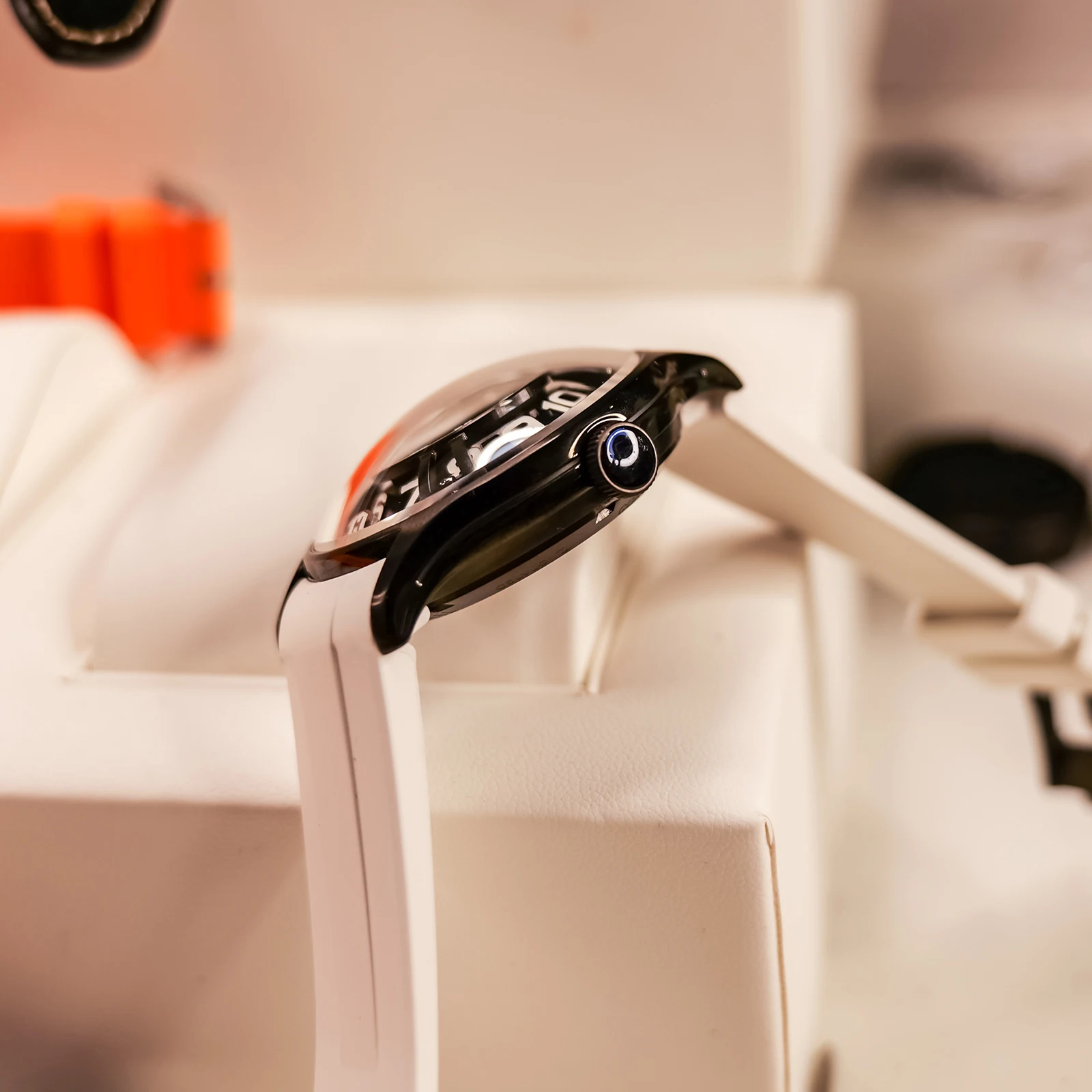
Japanese Innovation: Engineering Excellence in Dive Timepieces
The dive watch landscape changed dramatically with the emergence of Japanese manufacturers who brought their own engineering philosophy to underwater timepieces. This new approach combined technical innovation with production efficiency, creating professional-grade dive watches at more accessible price points.
Japanese dive watch innovation introduced several distinctive approaches:
- Monocoque case construction that eliminated the case back as a potential failure point
- Unique bezel locking mechanisms preventing accidental movement
- “Turtle” and cushion-shaped cases distributing pressure more effectively
- Specialized movements designed specifically for diving environments with enhanced shock protection
These watches quickly gained credibility among professional divers who appreciated their reliability and performance. Japanese manufacturers excelled at combining robust engineering with practical features focused on real-world diving conditions.
One significant contribution was the development of distinctive aesthetic approaches that departed from European traditions while maintaining all functional requirements. These design languages—characterized by angular cases, unique handsets, and distinctive bezel treatments—expanded the visual vocabulary of dive watches worldwide.
The technical achievements of this period demonstrated that dive watch excellence could come from different watchmaking traditions and manufacturing approaches. The automatic dive watches produced during this era represented a perfect marriage of innovation, reliability, and value that continues to influence modern dive watch design.
The Quartz Revolution and Digital Dive Instruments
The arrival of quartz technology in the 1970s disrupted every aspect of watchmaking, including dive watch design. Battery-powered movements offered advantages particularly suited to diving applications:
- Superior timekeeping accuracy unaffected by position or movement
- Reduced maintenance requirements ideal for professional use
- Opportunity to integrate electronic depth gauges and other sensors
- Simplified construction with fewer potential failure points
Early electronic dive watches pushed boundaries by combining traditional water resistance with new digital capabilities:
| Feature | Mechanical Dive Watches | Quartz/Digital Dive Watches |
|---|---|---|
| Power Source | Self-winding or manual | Battery (1-5 year life) |
| Accuracy | ±15-30 seconds per day | ±15-30 seconds per month |
| Depth Gauge | Separate instrument | Integrated electronic sensor |
| Display | Analog hands and markers | Digital or hybrid |
| Additional Functions | Limited to timing bezel | Multiple alarms, chronographs, logs |
The first dive watch with an integrated electronic depth gauge represented a fundamental shift from simple timing devices to comprehensive diving instruments. These watches could now provide actual depth information, not just elapsed time, enhancing diver safety and capability.
Traditional watchmakers responded to this challenge by emphasizing the reliability of mechanical systems that didn’t depend on batteries, while also adopting some electronic innovations in hybrid designs. This technological disruption marks an important transition point in the timeline of diving watch innovations, bridging the gap between purely mechanical instruments and the coming dive computer era.
The Dive Computer Era: From Primary Tool to Backup Instrument
The introduction of dedicated dive computers in the 1980s fundamentally changed the relationship between divers and their wristwatches. These specialized electronic devices offered capabilities that traditional watches—even electronic ones—couldn’t match:
- Real-time decompression calculations based on actual dive profiles
- Nitrogen saturation tracking across multiple dives
- Ascent rate monitoring with warnings
- Detailed dive logs with downloadable data
For safety and functionality reasons, dive computers quickly became the primary underwater instrument for most divers. This transition shifted the traditional dive watch from an essential tool to a backup instrument or stylistic choice.
The advantages of dive computers were compelling:
- Dramatically improved safety through continuous monitoring
- Longer bottom times through real-time decompression algorithms
- Complete dive history tracking for training and certification
- Reduced task loading by consolidating multiple instruments
Watchmakers adapted to this market shift by emphasizing the reliability of traditional dive watches as backup timing devices—the mechanical redundancy that could function when electronics failed. This positioning helped maintain the relevance of traditional dive watches among enthusiasts and professionals alike, even as the practical necessity diminished.
The history of professional diving watches evolution shows how this transition period forced manufacturers to reconsider the fundamental purpose of their products, ultimately leading to a renewed focus on heritage, craftsmanship, and reliability as key selling points.
Material Innovation: Beyond Stainless Steel and Acrylic
While the dive computer revolution changed the role of dive watches, innovation continued through material science advancements that enhanced both performance and aesthetics. Modern dive watches now incorporate materials that early pioneers could only dream of:
| Material | Traditional Solution | Modern Alternative | Benefits |
|---|---|---|---|
| Bezel Insert | Aluminum | Ceramic | Scratch-resistant, fade-resistant, luxurious appearance |
| Crystal | Acrylic or mineral glass | Sapphire | Virtually scratch-proof, improved clarity |
| Case | Stainless steel | Titanium, bronze, carbon fiber | Lighter weight, corrosion resistance, unique aesthetics |
| Luminous Material | Radioactive compounds | SuperLuminova, chromalight | Safety, brightness, longevity of glow |
| Gaskets | Natural rubber | Synthetic compounds | Improved longevity, chemical resistance |
Ceramic bezels represent one of the most significant improvements, providing virtually scratch-proof surfaces that maintain their appearance after years of use. Sapphire crystals offer similar durability benefits while providing exceptional clarity underwater.
Alternative case materials expanded both performance and aesthetic options. Titanium provides exceptional strength-to-weight ratio and corrosion resistance, while bronze automatic watches offer a unique patina that develops with use, giving each watch an individual character reflecting its owner’s adventures.

Modern luminous technologies eliminated radioactive materials while improving brightness and duration. These advancements allow contemporary dive watches to maintain their core functionality while addressing historical limitations in durability and safety.
The Heritage Revival: From Functional Tools to Luxury Icons
As dive computers assumed the primary functional role underwater, dive watches experienced a remarkable transformation in cultural significance. What began as utilitarian tools evolved into luxury symbols with rich heritage connections, leading to a renaissance in traditional dive watch design.
This revival manifested in several key trends:
- Faithful reissues of iconic historical models
- Modern watches incorporating vintage design elements
- Growing collector market for original vintage dive watches
- Emphasis on traditional watchmaking methods and hand finishing
- Limited edition models celebrating historical milestones
Manufacturers carefully balanced historical accuracy with modern expectations, preserving classic proportions and design elements while incorporating contemporary materials and manufacturing standards. The result has been a new generation of watches that honor their tool watch heritage while satisfying luxury market demands.
The collector market for historic dive watches has seen extraordinary growth, with rare examples achieving prices that reflect their cultural and horological significance rather than merely their functional value. This appreciation extends beyond individual models to encompass the broader dive watch heritage evolution, celebrating the ingenuity and adventure associated with these timepieces.
The unique attraction of materials like bronze lies in their ability to develop character over time, with each watch developing a bronze case oxidation pattern unique to its owner’s use and environment. This personalization process connects modern owners to maritime traditions while creating genuinely one-of-a-kind timepieces.
The Future of Dive Timepieces: Innovation Meets Tradition
Today’s dive watch market reflects a fascinating balance between heritage appreciation and forward-looking innovation. Modern manufacturers honor traditions while embracing new capabilities, creating timepieces that satisfy both nostalgic and practical desires.
Sustainability has emerged as a significant focus, with manufacturers developing:
– Recycled ocean plastic straps and packaging
– Solar-powered movements reducing battery waste
– Manufacturing processes with lower environmental impacts
– Partnerships with ocean conservation organizations
Technical innovation continues even as the primary functional role has shifted. Modern dive watches routinely achieve depth ratings that exceed practical diving limits, demonstrating engineering prowess while providing substantial safety margins for recreational use.
Advanced manufacturing techniques allow unprecedented precision while maintaining traditional aesthetics. Computer-aided design and CNC machining create components with tolerances impossible in earlier eras, improving reliability while preserving classic designs.
Automatic Chronograph Watches, Classic Style Dive Watches
$3,053.06 Select options This product has multiple variants. The options may be chosen on the product pageBronze Automatic Watches, Military Inspired Automatic Watches, Professional Spec Dive Watches
Price range: $1,442.21 through $1,442.82 Select options This product has multiple variants. The options may be chosen on the product pageProfessional Spec Dive Watches, Titanium Automatic Watches
$574.74 Select options This product has multiple variants. The options may be chosen on the product pageClassic Automatic Dress Watches, GMT Automatic Watches, GMT Dive Watches
Price range: $468.93 through $552.94 Select options This product has multiple variants. The options may be chosen on the product pageDay Date Automatic Watches, Professional Spec Dive Watches
Price range: $751.60 through $790.26 Select options This product has multiple variants. The options may be chosen on the product pageClassic Automatic Dress Watches, Classic Style Dive Watches
Price range: $742.56 through $1,099.56 Select options This product has multiple variants. The options may be chosen on the product page
The enduring appeal of mechanical dive watches in a digital age speaks to their unique combination of engineering excellence, heritage connection, and tangible craftsmanship. Unlike disposable electronic devices, quality mechanical watches offer potential lifetimes measured in generations rather than years, representing a different relationship with technology centered on longevity rather than constant replacement.
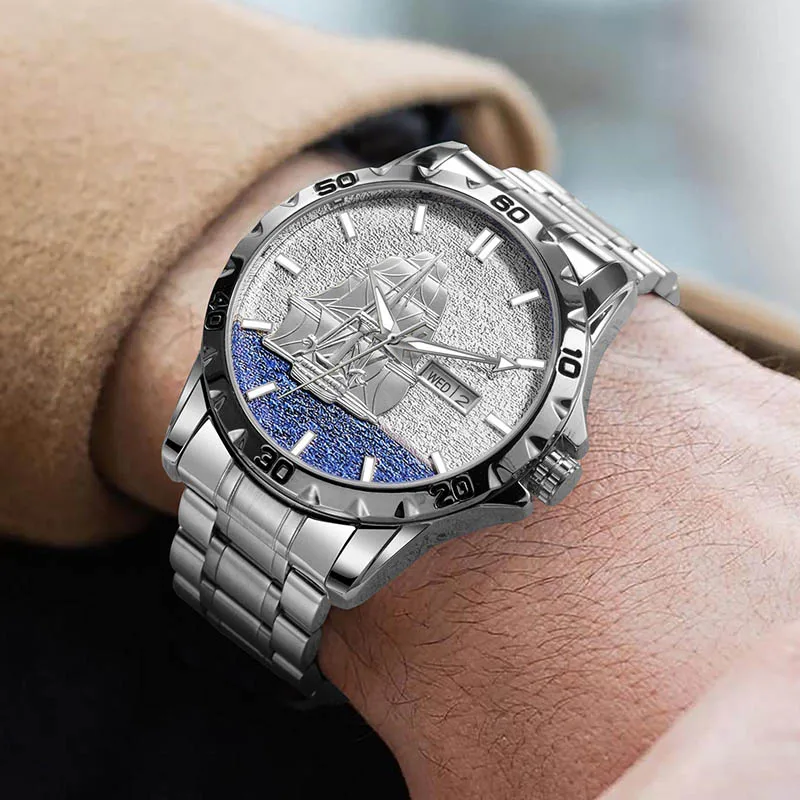
The growing popularity of GMT dive watches demonstrates how traditional dive watch platforms continue to evolve with additional complications that serve modern travelers while maintaining core diving functionality. These watches exemplify how heritage and innovation can complement rather than conflict with each other.
Are Mechanical Dive Watches Still Relevant in the Digital Age?
Despite the overwhelming practical advantages of dive computers, mechanical dive watches maintain a meaningful place in modern diving for several compelling reasons:
- They serve as reliable backup timing devices unaffected by battery failure
- Mechanical movements function indefinitely without power concerns during extended expeditions
- Simple analog displays provide clarity and immediate readability in stressful situations
- The distinctive aesthetic connects wearers to diving’s rich history and traditions
Many professional divers still follow the practice of using a dive computer as their primary instrument while wearing a traditional dive watch as backup—a redundancy system that combines modern safety with time-tested reliability. This approach acknowledges that electronic devices can fail, while mechanical watches offer simpler operation with fewer potential failure points.
Beyond practical considerations, dive watches provide a tangible connection to underwater exploration heritage that many enthusiasts value. The GMT vs dive watch functionality comparison reveals how these timepieces continue evolving to serve modern needs while maintaining their core identity as reliable underwater instruments.
What Makes a True Dive Watch by Modern ISO Standards?
The International Organization for Standardization established specific requirements for dive watches under ISO 6425, creating a clear distinction between fashion-oriented “dive style” watches and true diving instruments. These standards include:
- Water resistance to at least 100 meters (330 feet)
- Unidirectional rotating bezel with minute markings
- Clearly visible indication the watch is running (usually a luminous seconds hand)
- Sufficient luminosity to be readable at 25cm in total darkness
- Magnetic resistance to maintain accuracy near diving equipment
- Shock resistance to withstand typical diving impacts
- Chemical resistance to saltwater and chlorinated water
Testing procedures are rigorous, including:
- Submersion in water at 125% of rated depth
- Temperature shock tests simulating sudden water entry
- Crown and system operation verification under pressure
- Impact testing to ensure durability
These standards ensure that certified dive watches will perform reliably in actual diving conditions. Many manufacturers exceed these minimum requirements substantially, particularly in depth ratings and luminosity.
Understanding these standards helps distinguish between watches suitable for professional underwater use versus those designed primarily for aesthetic appeal with minimal water resistance. True dive watches represent a commitment to functional reliability that transcends fashion considerations.
Can Any Water-Resistant Watch Be Used for Diving?
Not all water-resistant watches are suitable for actual diving, despite marketing claims that might suggest otherwise. Understanding water resistance ratings helps clarify appropriate use cases:
- 30m rating: Splash resistant only, not suitable for swimming
- 50m rating: Suitable for swimming and showering, not for diving
- 100m rating: Minimum for recreational diving per ISO standards
- 200m+ rating: Professional diving use
- 300m+ rating: Saturation diving capabilities
True dive watches incorporate specific design features beyond mere water resistance:
- Unidirectional bezels that can only rotate counterclockwise (preventing accidental extension of dive time)
- Secure strap attachments that won’t fail under pressure
- Highly legible dials designed specifically for underwater visibility
- Protected crowns that minimize water entry risk
Using non-dive watches for scuba diving introduces unnecessary risks. Water resistance ratings are tested under static conditions, while actual diving involves dynamic pressure changes, temperature fluctuations, and physical impacts that can compromise seals in watches not specifically engineered for these conditions.
For recreational water sports like swimming and snorkeling, many water-resistant watches provide adequate protection. However, for actual scuba diving, properly designed and certified dive watches or dive computers remain the appropriate choice for safety and reliability.

